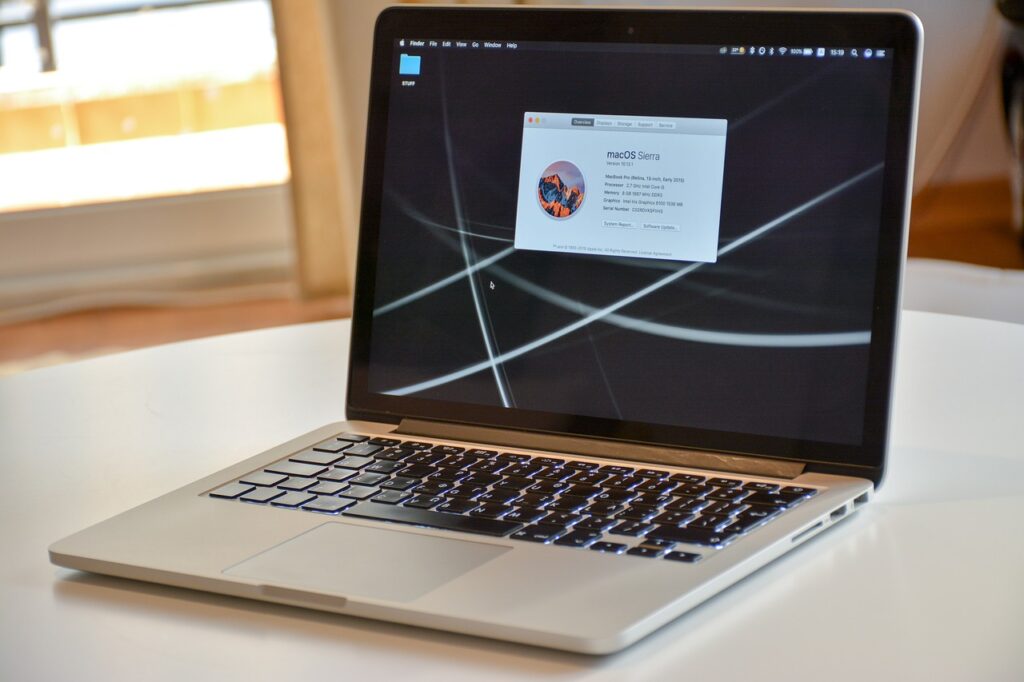If you want to get a patent in India, the specification of the patent is arguably one of the most important things you need to keep in mind, other than the claims.
Getting a patent application done right, involves ensuring that the claim that you put forward in your application is well-supported by the patent specification.
Patent specification is just a section of the patent application, among other sections, such as-
- The Title,
- The Abstract,
- The Claims, etc.
While these areas are legally different from that of the patent specification, we shall be slightly touching up on them too so as to provide you with a clearer understanding of how you can draft your patent specification in the best method possible.
As always, if you are stuck and need a free consultation, book a free consultation with us and let us draft your patent specification for you!
What is Patent Specification and Why is it So Important?
A patent specification is the “heart and sole” of a patent application. The patent specification and patent claims form the two most important elements of any application for the grant of a patent.
As you may know, a patent is a legal monopoly granted to you, by the state to enable you to use your invention free from interference by any third party in exchange of you sharing your invention with the country. This helps boost scientific innovation in the country.
And, the function of a patent specification is for you to provide the scientific details of your invention, which shall go forward in supporting the claims that the patent seeks.
Note that it is this section that faces intense scrutiny from the patenting authorities concerned, so if it is done in a haphazard fashion, your chances of getting a patent granted to you, is slim to none. Also, even if you manage to get your patent registered, it can face several challenges by your competitors if your patent specification is not solidly built.
While the patent application is submitted in Form 1, the specification is created and submitted as per the Form-2.
The types of Patent Specifications-

There are basically two types of patent specifications recognised in India. They are-
- Provisional specification, and
- Complete specification.
A provisional specification is basically a preliminary application filed before filing for a patent, usually when the invention has reached a stage when although it is not complete, it may be properly described.
This is usually filed in order for the patentee to get a priority date, that is it helps prevent anyone else from filing for a similar patent after the date of submitting your provisional specification, if you succeed in getting a patent thereafter.
To put it more simply, suppose you submitted a provisional specification on June 1, 2021 and succeeded in getting a patent on December 1, 2021. And, another person has submitted a complete specification of the same invention on July 1, 2021 and got the patent on November 1, 2021.
In such a case, you can file a case against the other person after December 1, 2021 for having the other person’s patent revoked as you filed the provisional specification before the other person.
However, usually if you have submitted a provisional specification, patent offices will spot it and not allow another person to submit a complete specification on a similar invention.
Now, the complete specification
What’s in a Proper Patent Specification?

It’s a rather strict procedure, when it comes to applying for a patent. As such, you need to follow the instructions quite carefully, so as to improve your chances of getting your patent application granted. The patent specification has to contain the following areas –
- It should start with the title of your invention that you wish to patent. Note that the title has to be in conformity with the title of the patent application which serves to denote the specific features of your invention. In the title of the patent specification, you need to mention about the subject matter of the invention within a maximum of 15 words. Some examples of patent specification titles are-
- Improved thermal flow in semi-conductors,
- Improvements in pneumatic tyres, etc.
- After the title of the invention, you should provide for a brief summary of your invention within the specification. This should be done in around 1-2 paragraphs. Just mention the scientific niche, in which your invention belongs, what your invention is about, how it works and what it does very briefly.
- If the invention is a physical product, it is highly recommended that you attach drawings with the patent specification and describe the drawings in details too. You usually need drawings if your invention relates to a mechanical, chemical or biological product – that is, something tangible. You need to refer to the drawings in your patent specification when describing each of the aspects of the invention. Keep the following points in mind (all of which have been provided for, in Rule 9 of the Patents Rules, 2003) when you create your drawing sheet-
- The drawings have to accompany the specification section but not made inside the section. You can freely refer to the drawings but don’t put the pages within the specification.
- The drawing has to be made on a durable sheet of paper that is of A4 size.
- When you make the drawings, ensure that you create margins of at least 4cm on the top and left side and 3cm on the bottom and right side of each and every sheet. As these are the minimum numbers, you would be better off creating a 5cm margin on each side of the sheet.
- Make sure the drawings shows your invention clearly and do not mark the dimensions in the drawings. Also, do not write any descriptive thing on the drawing sheet. However, flow diagrams are allowed.
- Ensure that the drawings are marked as per sequence and that your (the applicant’s) name is written in the top left corner of the drawing sheet while the number of drawing sheets as well as the page number have to be mentioned in the top-right corner. Finally, you need to provide your signature on the bottom right corner of the drawing sheets. Your patent agent can also do it for you.
- Now, if you have already filed your drawings in the provisional specification, and do not wish to make any changes in them in your complete specification, then you are free to refer to those drawings in your complete specification by mentioning in your references that the drawings are already have been filed within the provisional specification.
- Now you need to go for the details. Start with providing the materials that are needed for the invention (if any). Then start describing the invention in details. Write about how the invention operates and the best method available by which anyone can recreate the invention. Also take care in mentioning how your invention is an improvement compared to the other products available in the market or how it is different from the other products available.
How to Properly Describe Your Invention in the Patent Specification

This is often a key area wherein patent applicants face trouble. Well, you just need to keep the following pointers in mind-
- The description should be written in a very clear and simple fashion. You need to ask yourself – “Will a person who is moderately skilled in the subject matter, understand my specification?” If the answer, is a yes, then you are good to go. Try to elaborate upon the concept using examples as well as referencing the drawing. Try to make it as simple as possible.
- You need to go in-depth and describe the key differentiators that your invention has to offer. These differentiators must mention the improvements that your invention has to offer compared to the present technology.
Beware of this concept as you don’t want to get hit by Section 3(d) of the Patents Act, 1970 which provides that – “the mere discovery of a new form of a known substance which does not result in the enhancement of the known efficacy of that substance or the mere discovery of any new property or new use for a known substance or of the mere use of a known process, machine or apparatus unless such known process results in a new product or employs at least one new reactant” shall not be considered as an invention and therefore you won’t be able to get a patent on them.
While this is mostly a concept reserved for chemical products, it can and does apply to physical and software products as well. As such, you should give this area more care. Similarly, in case of a patent of addition, you need to first refer to the serial number of the original patent that you have been granted, or if it still in the application stage, refer to the application number and then detail the improvements that have been made in the present application.
- When referencing drawings, first mention the drawing that you are referring to and then use the reference letters to explain the concept.
- The patent application has to be written in English. Try to not use non-English terms as that can lead to objections being created on your patent application.
Additional Pointers for Writing a Patent Specification for a Biological Invention or Biotechnological Product

When you are writing a patent specification for a biological or biotechnological invention, which uses any form of biological material, you need to mention where the biological material is available at. If the biological material is not available publicly and you can not describe it well enough, as is required by the Patents Act, 1970, you need to deposit the material with the International Depository Authority that had been established under the Budapest Treaty.
Now, if you can describe the biological material well enough and it is publicly available, then refer the material in the specification within 3 months after the date when you have filed the patent specification and make sure to provide in detail all the characteristics of the biological material so that a person who is skilled in the subject can easily and correctly identify the material that you are specifying.
Also, mention the geographical origin of the material as well as where you obtained it from.
But, if the biological material is not publicly available and you have deposited it in the aforementioned institution, then you need to mention along with other relevant details (if any), the name and address of the institution where you have deposited the biological material and provide the serial number of the deposit as well as the date on which the deposit was made.
If the invention requires sequence listing of nucleotides or amino acid sequences to be mentioned, do so in a computer readable text format along with the application, as print form of the sequence listing or sequences are not required under the statute, as is mentioned in Rule 9(3) of the Patents Rules, 2003.
- Now finally comes the claims. This portion is not technically part of the patent specification, but it is an extremely valuable section that goes along with the specification section. In fact, it has been held in an Indian Supreme Court judicial decision (Biswanath Prasad Radhey Shyam v. Hindustan Metal Industries, AIR 1982 SC 1444), that a patent specification has to be interpreted along with the patent claims. This is in contrast to the previous practice of reading the claims section first, and according it the most importance among all of the sections in a patent application. And, this isn’t just in India. The case that I referred had in fact, drawn its influence from a UK judgement all the way back from 19th century (Arnold v. Bradbury, [1871] 6 Ch. A. 706).
While drafting a patent claim is an art itself, and is quite a broad topic, since it is very much allied with the patent specification, here are some pointers that would help you out-
- Follow this format for your claims as it has been suggested by WIPO – (Insert the title of the invention) comprising: (mention the constituents or parts of the invention one after the other and explain how these parts are connected with each other).
- When claiming the effect of the invention, divide the effects into two categories – broad and narrow. The broad claims will try to get you as much of a patent protection as possible, while the narrow claim will ensure your claim doesn’t get validated even if the broad claims are.
This is important as the broad claims are inherently vague and does not clearly demarcate your patent’s applicability while the narrow claims have just that function.
Aiming to go only broad, may get your patent opposed, as was in the case of Ram Narain Kher vs Ambassador Industries, New Delhi (cited in AIR 1976 Del 87), wherein the Delhi High Court held that the petitioner’s claims were not clearly demarcated and were vague and so the patent infringer, who in this case was the defendant was competent to ask for the revocation of the patent.
Final Words
So, that’s all you need to know about drafting an amazing patent specification. While the section on claims is just a brief on how to go about it, we will follow it up soon with a post exclusively on how to write patent claims.
If you have any questions, leave them in the comments or drop in an email.
You may also check out our list of services to see if there’s any stuff we can help you out in, such as patent drafting, or help you to draft your patent yourself.
If you want help in getting your patent drafted, book a free consultation with us and let us draft your patent specification for you!
Read Next:
- Should You Patent or Copyright Your Software – What’s the Best Choice?
- What Businesses Need to Know about Copyright Law in India





















